We know that the citizens of the Roman Empire cared about cleanliness - after all, they made visits to public baths a favorite pastime. It should come as no surprise that they placed particular emphasis on oral hygiene. However, practices designed to provide them with a flawless smile would make many a toothache today. Or vomiting.
One of the fathers of ancient dentistry, Aulus Cornelius Celsus, aptly stated that food debris can cause a disease called caries dentium, that is, caries. The one who lived in the 1st century BCE the scientist argued in the pages of his monumental work "De Medicina" that daily brushing is a prerequisite for maintaining healthy teeth.
Especially if you are an aristocrat who loves all sorts of delicacies - adds Greg Jenner, author of “A Million Years in One Day. A fascinating story of everyday life ” . In it he writes - Although a beautiful smile was highly valued in Rome, the cream of the party did not intend to give up sumptuous feasts; they literally wanted to have a cake and eat it.
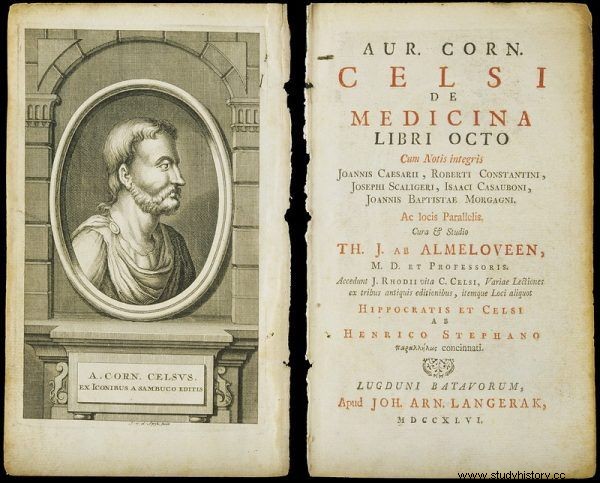
Aulus Cornelius Celsus rightly noted that food debris can cause tooth decay (Source:Wellcome Library, London, license:CC BY 4.0).
If things had gone too far and the tooth was starting to deteriorate slightly, Aulus Cornelius Celsus recommended that the hole be filled with lead (Latin for plombus stands for lead, hence today's seal).
Of course, the treatment of cavities was the last resort. After all, no one wanted to experience what Celsus mentioned on their skin. And he wrote that toothache is, apart from the pain of death, the greatest and cruelest of all pains .
So how did the average Roman take care of oral hygiene? The methods were apparently similar to modern ones - a special mixture, a kind of ancient toothpaste, was applied to the twig. Of course, the Roman aristocrat was not going to do this personally. A specially trained slave gently rubbed his owner's [teeth] and gums with a soft twig coated with cleaning agent - describes this procedure by historian Greg Jenner.
There were also used "refreshing" rinses. The composition of these substances, however, may seem controversial from today's point of view.
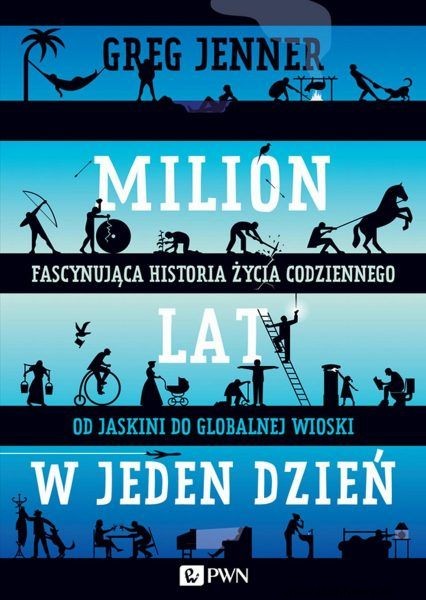
The article is based on, among others, the book by Greg Jenner “A Million Years in One Day. A fascinating story of everyday life. ”
Antique toothpaste
The Romans used several types of mixtures, which were what we would call toothpaste today. Pliny the Elder was convinced of a mixture consisting of crushed brains, to choose from:mouse, hare, rat or wolf . In his opinion, this type of stick was also an ideal ointment for ailments related to dental diseases and inflammation.
The average Roman, however, preferred harder materials. According to the popular belief at that time, only substances with such a structure could ensure a healthy smile and strong teeth for years. Typical of a Roman home consisted of crushed donkey bones or oyster shells .
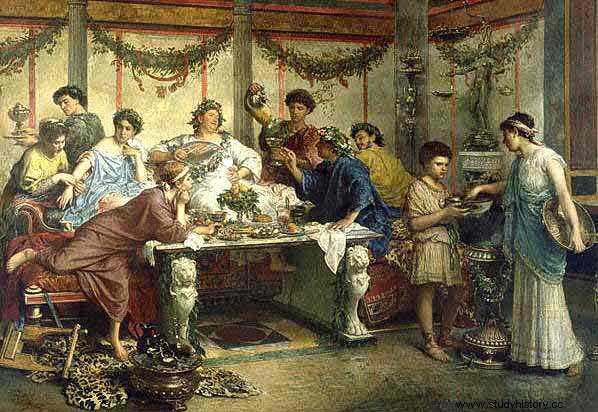
Rich Romans loved to feast. At the same time, they wanted to have healthy teeth, without any debris. What did they do? Same as always! They trained a slave to take care of their teeth. The painting "Il Parassita" by Roberto Bompiani (source:public domain).
Potions made of animal horns were also popular. For example, Messalina, wife of Emperor Claudius, washed her teeth with a paste made of powdered deer antlers, which was considered a very strong aphrodisiac.
As you can imagine, hard substances had the opposite effect than the Romans assumed. The teeth were white after such treatments, but the belief in the strengthening effect of these drugs was false - in this way, together with the stone, the ancients also removed the enamel.
Human urine rinse
The panacea for all oral ailments was to be a special rinse made of human urine . The Romans did it not without reason. They assumed that if urine was an ideal bleach for washing tunics, its cleaning properties would also work on the teeth.
The ancient mouthwash, however, was not obtained in a trivial way, as it might seem. The urine had to be of high quality, so the Romans did not hesitate to import the best types of urine from the farthest corners of Europe. They especially like the urine of young Iberians which, in their opinion, contained the most beneficial ingredients. They used special tanks for transport.
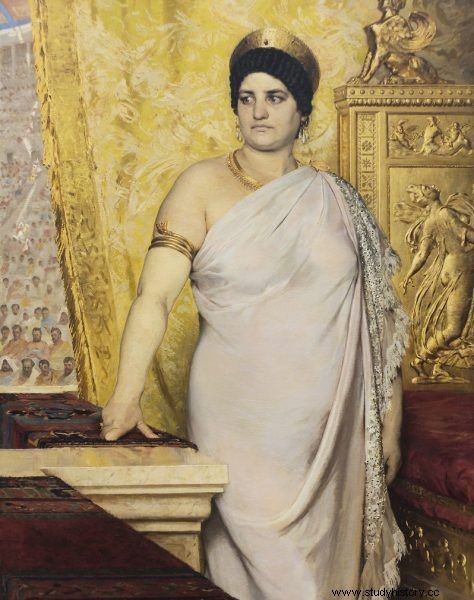
The wife of Emperor Claudius Messalin was brushing her teeth with a paste of powdered deer antlers. Like other Romans, she must have rinsed her mouth with Iberian urine. Is that why this grimace on his face? The painting "Messalina" by Peder Severin Krøyer (source:public domain).
However, anyone who thinks that the Romans, focusing on oral health, no longer paid attention to fresh breath, is wrong. Specific rinses have often been mixed with fragrances. Powdered coal and bark were also supposed to help in keeping the pleasant smell from the mouth.
As ridiculous as it may seem, the ancients were right about judging the salutary properties of urine. Its health benefits are also appreciated nowadays. Proponents of urinotherapy argue that human urine is a cure for all known diseases - from colds to cancer. Ammonia compounds contained in urine affect teeth whitening, they also have antibacterial and disinfecting properties. For this reason human urine was used as a rinse back in the 19th century!
Ammonia compounds are, moreover, components of modern pastes. But don't worry! Today they are not obtained from urine, but are made by laboratory methods.
Grinning Romans
Did the methods used by the Romans produce the desired results? It can be assumed that if they were ineffective, they would have long ago abandoned these practices and found other, less invasive means. The effectiveness of the ancient methods of oral hygiene is evidenced by, for example, the healthy teeth of the inhabitants of Pompeii emphasized by scientists.
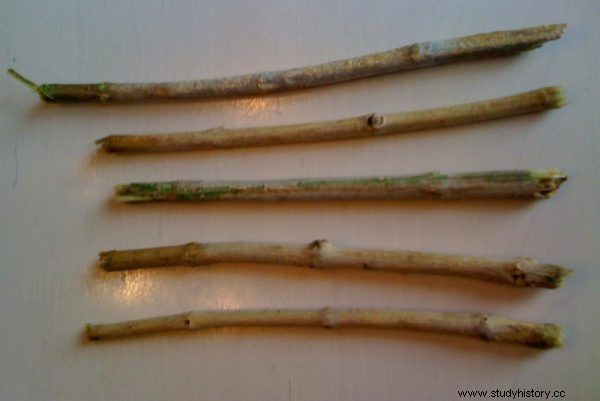
The Romans did not have brushes, but used soft twigs. The photo shows a miswak - a branch made of arak wood, a natural equivalent of a toothbrush with whitening properties (author:Middayexpress, license:CC BY-SA 3.0).
Neglected teeth were not welcome in Rome anyway. You can do yourself great harm when you laugh having black teeth, too long or crooked - Ovid argued.
The Romans, who valued white teeth, tried to use every possible opportunity to show off their healthy bite. Their ostentatious behavior in this regard sometimes took on grotesque forms.
Catullus, for example, mentions in one of his poems a man named Egnatius who used every opportunity to show off his dazzling smile. He was not always tactful. When the speaker makes us cry, he grins, when at a funeral a mother mourns for her only son, he laughs - described the Catullus of Egnatius.
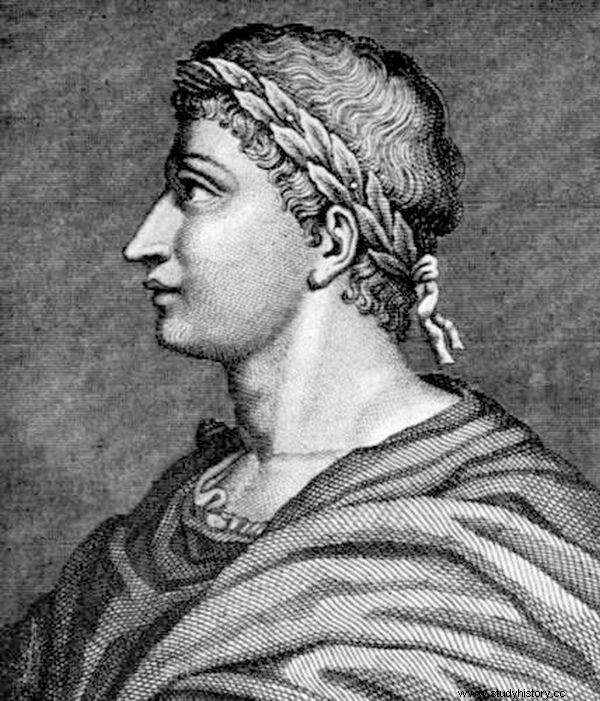
Latin poet Ovid warned against smiling if our teeth are black or crooked (source:public domain)
Of course, there were times when a tooth had to be pulled out. However, this was not yet a reason for despair - in ancient Rome, single iron implants were successfully made. Here, although not the doctor, but the blacksmith, entered the game, the fragments of prostheses that have survived to this day testify to the careful performance of this type of treatment.
Today dentistry has developed a lot, cabinets in our bathrooms are full of cheap, easily available tooth care products, and we have no excuse not to care for the hygiene of our mouths - Greg Jenner closes in. The reluctance of children to brush their teeth or our fear of the dentist pales in the face of what the ancients had to do to keep their teeth in good shape.
***
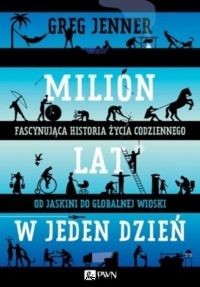 Greg Jenner in "A Million Years in One Day. A fascinating story of everyday life ” guides us, step by step, through all our daily activities, showing that each of them has its own hidden meaning and a passionate past. Brushing your teeth with a toothbrush, cereal with milk for breakfast, wearing panties under your pants - these are not the obvious choices. It took centuries for our ancestors to find optimal solutions. Sometimes it was enough to go back to the good old ways from thousands of years ago.
Greg Jenner in "A Million Years in One Day. A fascinating story of everyday life ” guides us, step by step, through all our daily activities, showing that each of them has its own hidden meaning and a passionate past. Brushing your teeth with a toothbrush, cereal with milk for breakfast, wearing panties under your pants - these are not the obvious choices. It took centuries for our ancestors to find optimal solutions. Sometimes it was enough to go back to the good old ways from thousands of years ago.
In the PWN Publishing House online bookstore you can buy this book for PLN 31 - with a 30% discount!
Bibliography:
Sources:
- A . Cornelius Cels about the healing of books of eight , translated by H. Łuczkiewicz, Warsaw, 1889.
- Gaius Valerius Catullus , Cattulus:The Poems , poem 39, translated by Tony Kline, [access:26/02/2016].
- Pliny the Elder Natural History of Books XXXVII , translated by Józef Łukaszewicz, Poznań 1845.
Studies:
- Wenbrandt James, The Excrutiating History of Dentistry. Toothsome Tales &Oral Oddities from Babylon to Braces, New York 1998.
- Malakhov Gennady, Urinotherapy , September 2004.
- Jenner Greg, A million years in one day , translated by Julita Mastalerz, Warsaw 2016.
- Porter Roy, The Greatest Benefit to Mankind:A medical History of Hummanity from Antiquity to the Present , London 1997.
